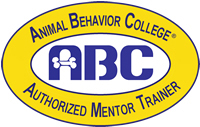I’m sitting in a living room in a rural home in Belchertown. There is a tiny speckled dog with the cutest-ever terrier face dozing off beside his owner. I am there because one week ago he launched at her face and bit her above her eye. He did this because she took a flip flop out of his mouth. We are going through the diagnosis (resource guarding) and prognosis (good) when it comes. The Question I get asked almost daily:
“Is it fixable?”
For the past decade, clients have asked me this with tones varying from desperate to skeptical. I get asked this during the phone screening, at the consultation or months into treatment. Whether it’s separation anxiety, fear aggression or nastier forms of aggression or reactivity, the question remains the same
“Is it fixable?”
Now, I am by nature an optimistic person. I have seen progress with dogs that borders on miraculous. But I’m going to be honest. The answer is a resounding NO. It can’t be fixed. Behavior can be modified since it’s fluid and not static. It can be modified so it looks nothing like we started with. But aggression will always be there.
I use a lot of analogies when I work with my clients. The initial paperwork asks what the owners do for a living. I ask this so I can offer analogies that they’ll understand. Photographers get metaphors about capturing behavior like a snapshot. I’ll talk to the firefighters about putting out fires and nurses about triage care. My favorite profession to use for comparisons is a fitness/nutrition counselor.
Training requires muscles like any skill. In order to see change, you have to work at it. And much like losing weight or preparing for a marathon, if you stop working you won’t reach your goals. Training muscles can get flabby and you can get hurt if you push too hard, too fast. Changing a dog’s behavior is like any fitness regime. It requires diligence, patience and consistency. You have to manage the environment for success (like, if you’re dieting you can’t surround yourself with twinkies). You have to be consistent. If you diet 23 out of 24 hours, but eat all those twinkies on that last hour, well, you’ve just erased the work that went into those other 23 hours. If you’re working on your dog not barking, you can’t put him outside unsupervised where he barks for an hour. You just sabotaged all your hard work. The reality is that no matter how much progress you make, if you sit back and call it a day then gradually you’ll revert back to flab. Some people will get fatter than others and, likewise, some dogs will regress into poor behavior faster than others. We all know people that seem to lose weight like there’s nothing to it and others who have to work their tail off just to lose a pound. For dogs, changing behavior is the same. Some will need a ton of training to handle the simplest of tasks. Others will pick it up quickly and hold onto it longer.
A successful behavior mod program includes managing the environment for success (blocking a window so your dog can’t bark his head off at every person who passes by, for example). It includes training. You have to practice consistently and sometimes it’s not fun or it gets boring. Lastly, you have to create different emotional associations for your dog and whatever the triggers are. This means no bad experiences with triggers and lots of positive exposure. This requires planning and ongoing evaluation of the dog. When all three parts are in action, progress is almost guaranteed. It’s like keeping the pantry free of sweets, working out every day and eating a carefully chosen, healthy diet. When all the bases are covered, amazing things can happen.
Beautifully modified behavior is like the difference between a fitness model and an obese person. They might be the same person but you’d never guess it. When the UPS man spontaneously hugged my fear-aggressive border collie, Kai, he had a fitness model moment. After years of building up his training muscles, he appeared to be a totally normal, social dog. But my breath still caught in my throat and I was sure to REALLY reinforce my boy for such a wonderful use of his training muscles.
So, much in the way that you can’t “fix” a human body to stay svelte or muscular, you can’t fix a dog dealing with aggressive reactions. You can, however, create amazing changes if you’re committed. And I have to say that those fitness model moments make the work pretty well worth the effort!
 Get our monthly newsletter packed full of helpful training tips!
Get our monthly newsletter packed full of helpful training tips! 






